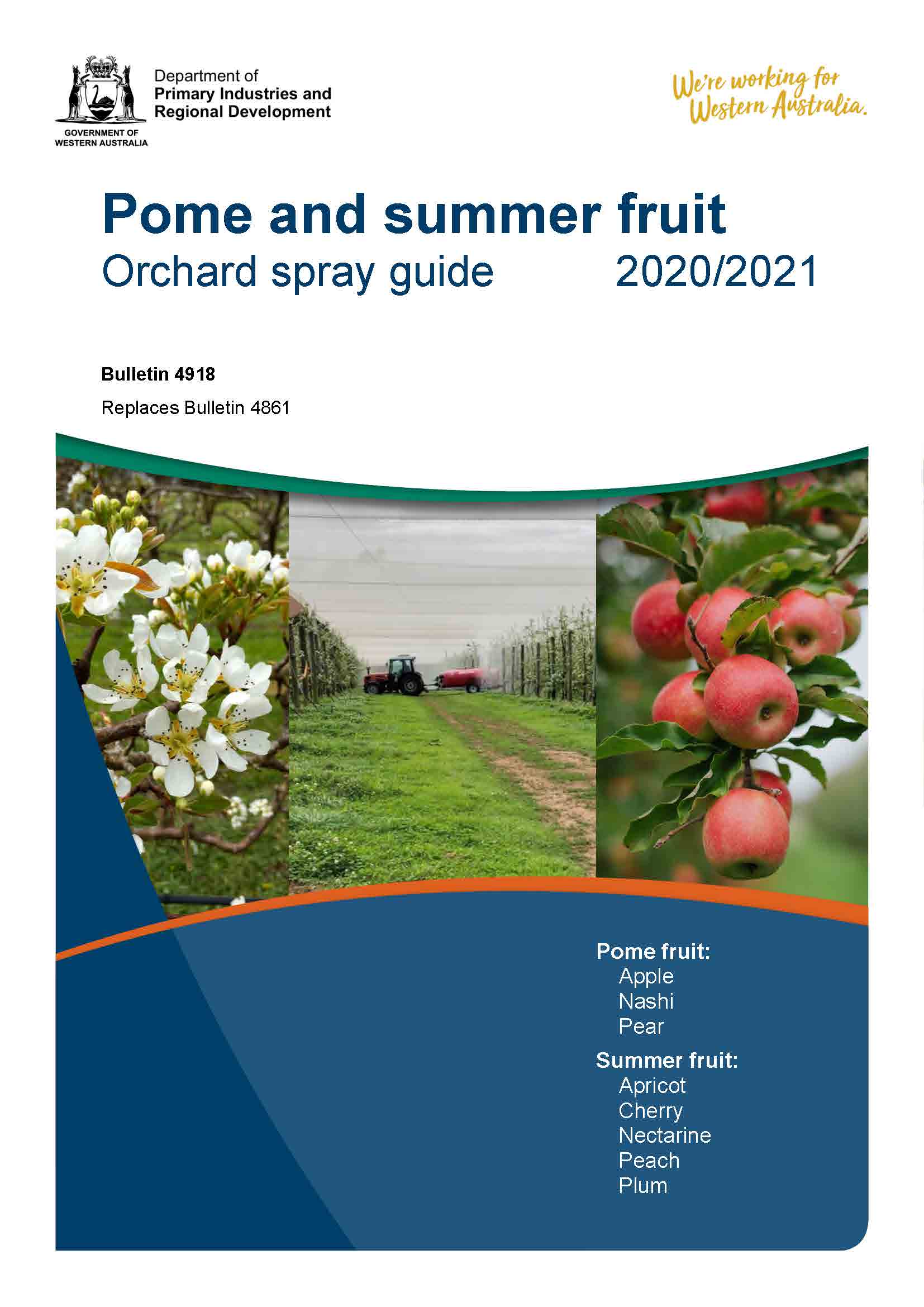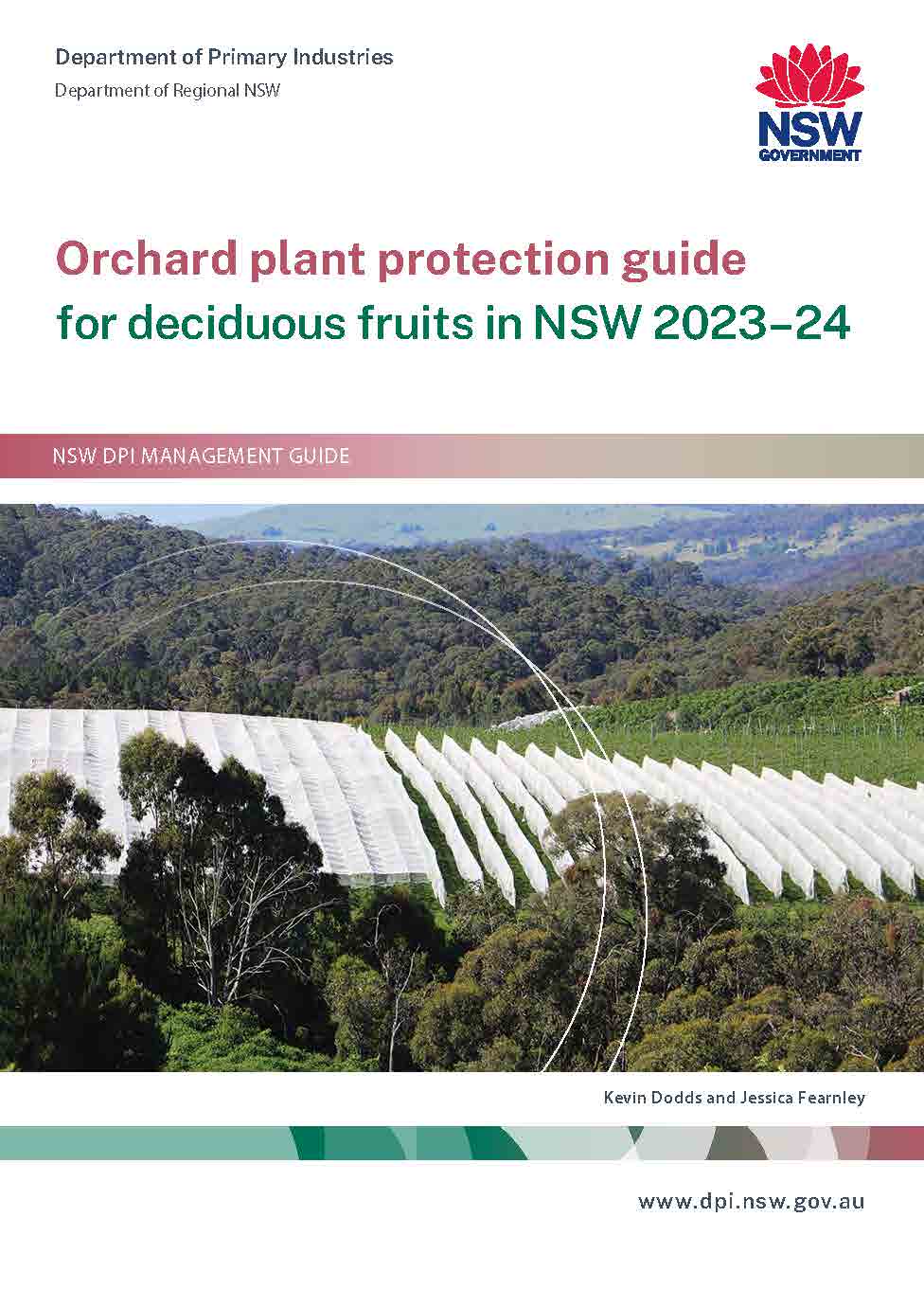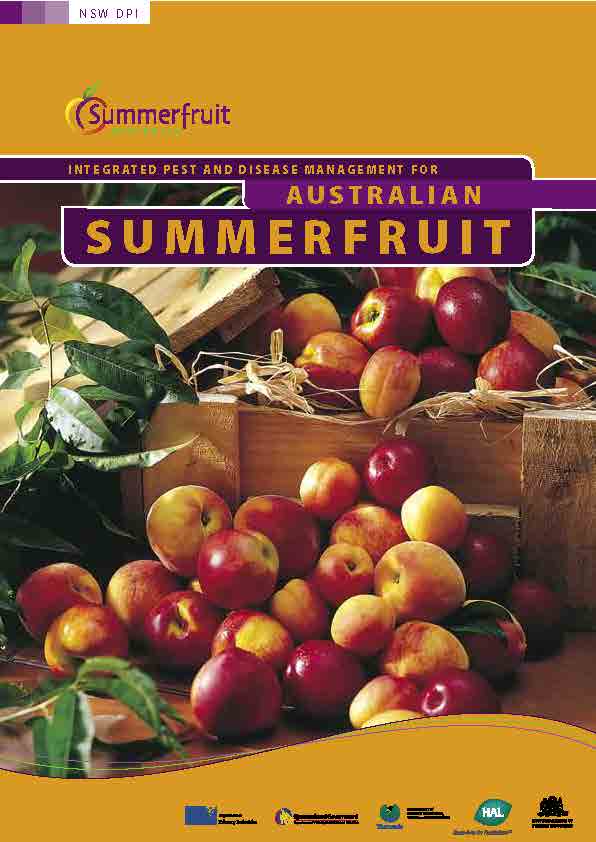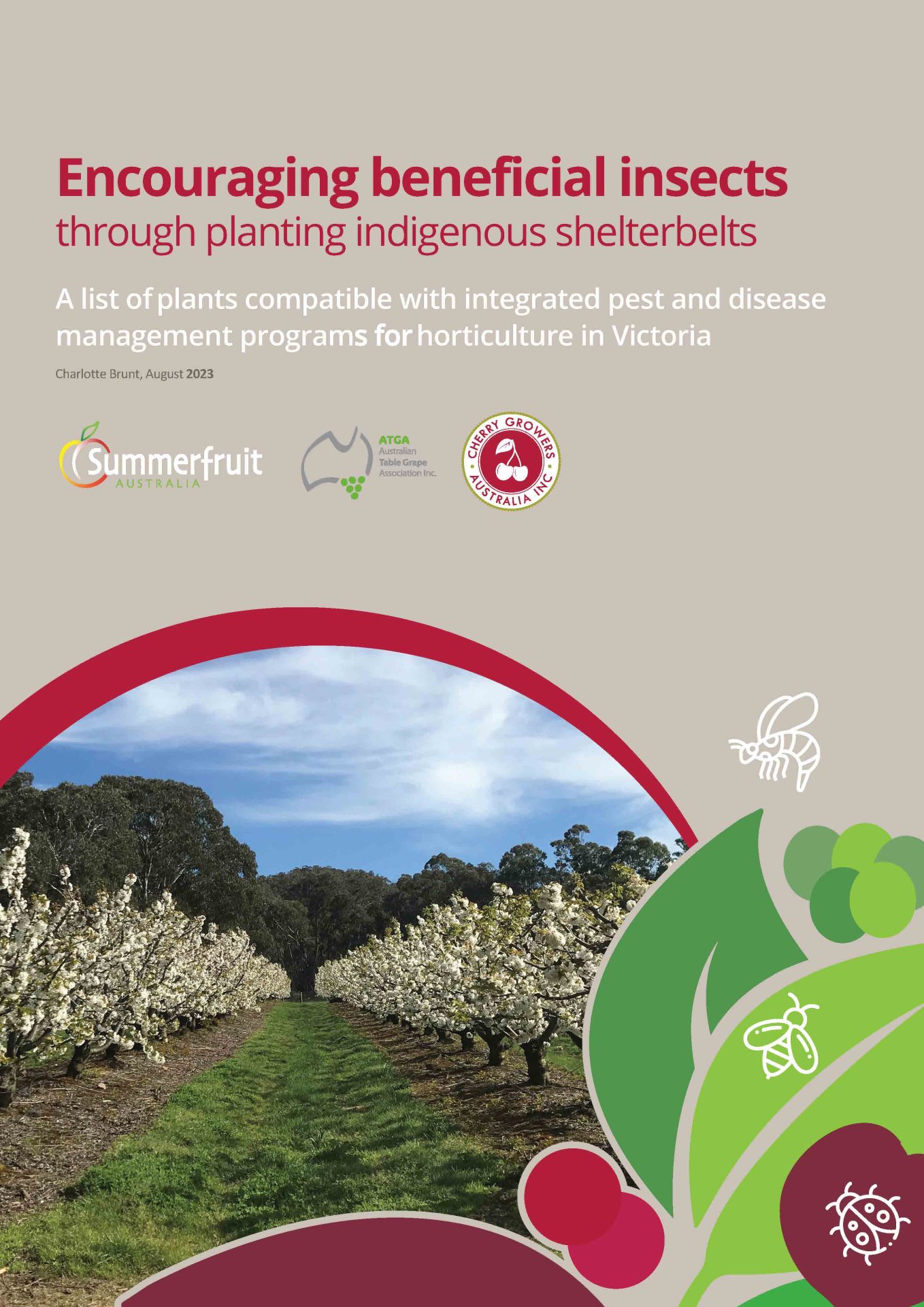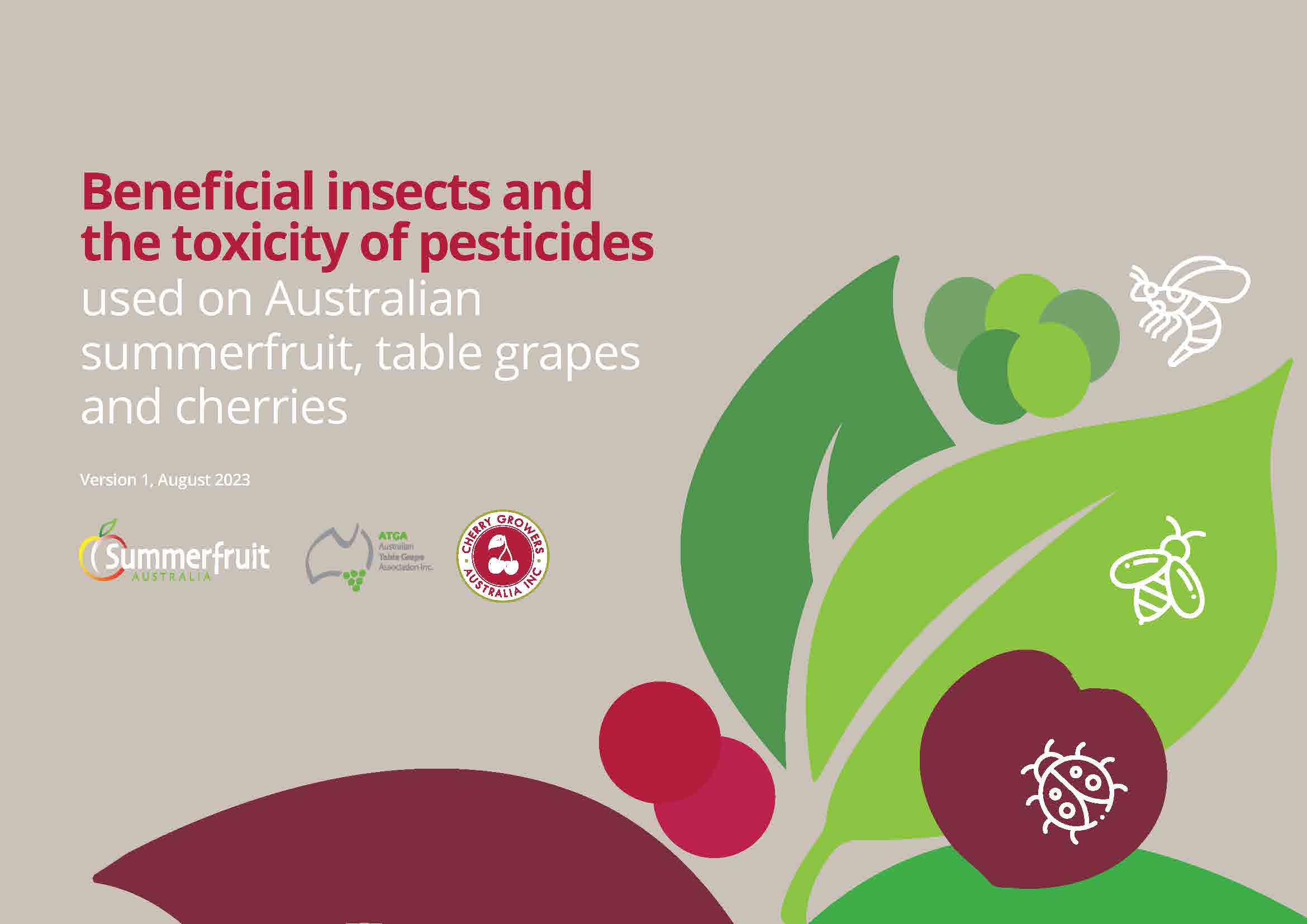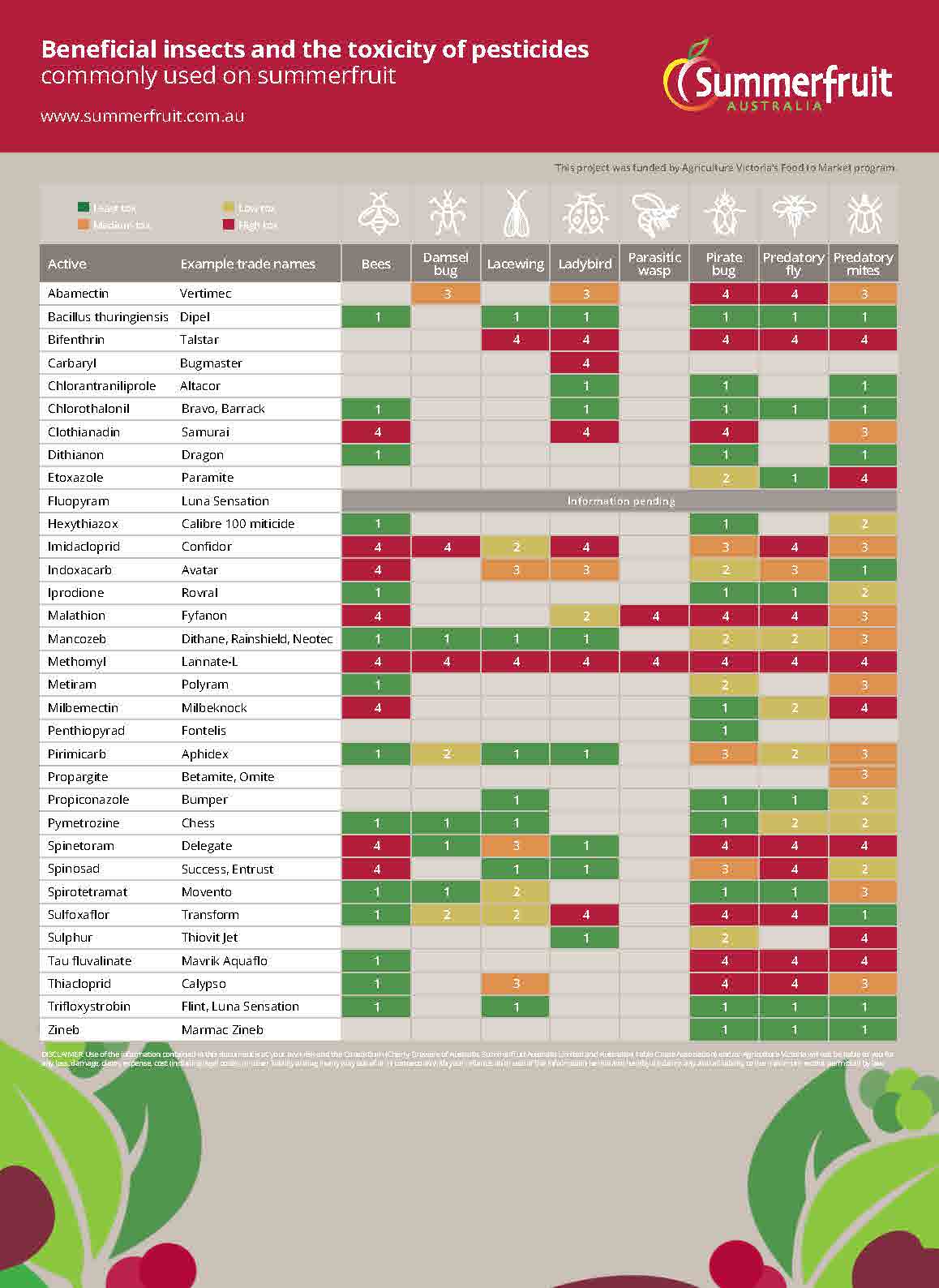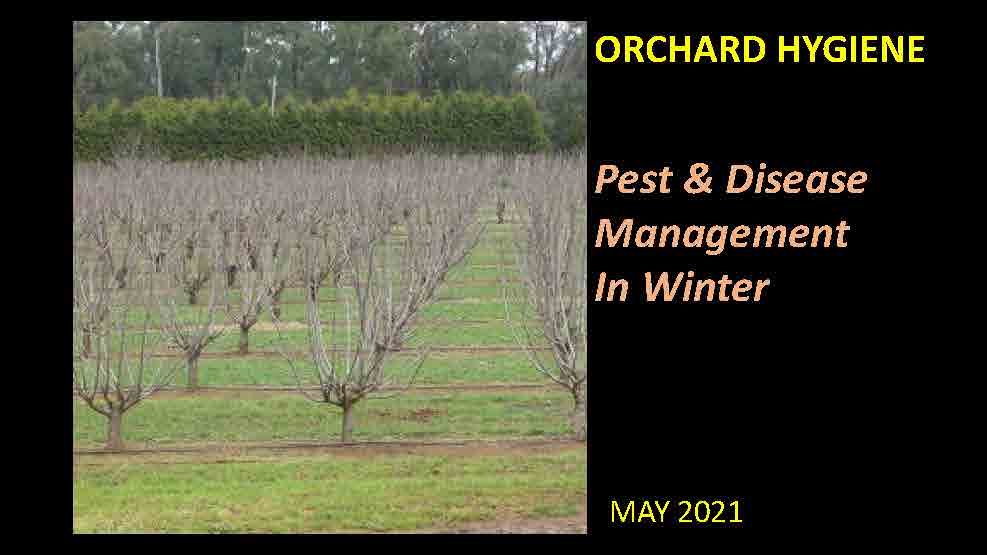Integrated Pest Management (IPDM)
Integrated Pest Management (IPDM) “involves evaluating your pest and disease problems and then applying the most appropriate solution. The complication is that when choosing this option, you must consider its impact on the entire block. For example, applying bifenthrin for a small Carpophilus infestation may kill the natural enemies of mites. This, in turn, may create larger problems (and you lose more money) by creating a two spotted mite problem (Summerfruit IPDM Manual, 2005).
A range of IPDM manuals are available for download.
Beneficial insects
Beneficial insects are the natural enemies of crop pests. Many Australian native arthropods are useful in managing pests, such as light brown apple moth (LBAM), codling moth (CM), oriental fruit moth (OFM), aphids, mealybug, pest mites and other troublesome species.
Some beneficial insects, such as lacewings, ladybirds, parasitic wasps (Trichogramma), and predatory mites, are available commercially and can be bought from integrated pest management specialists to augment existing wild populations, or in response to an outbreak or flare.can often have a negative impact on these beneficial species. The
effects of these agrichemicals may be different for different insect
groups.
Orchard Hygiene
Pests and diseases live in trees and branches, on infected fruit and leaves, in debris or weeds or underground. With good orchard management and by avoiding highly toxic chemicals, winter offers the chance to significantly reduce the threat of pests and diseases. It also ensures any chemicals used during the coming season are more effective.
Maximum Residue Levels (MRLs)
A maximum residue limit (MRL) is the highest amount of chemical residue legally allowed in food produced and sold in Australia. If you export, each country has their own MRLs which are different to what we have in Australia. To make it easier for growers to navigate this space, SAL has developed an MRL-WHP app (or spreadsheet) for international and domestic markets.
